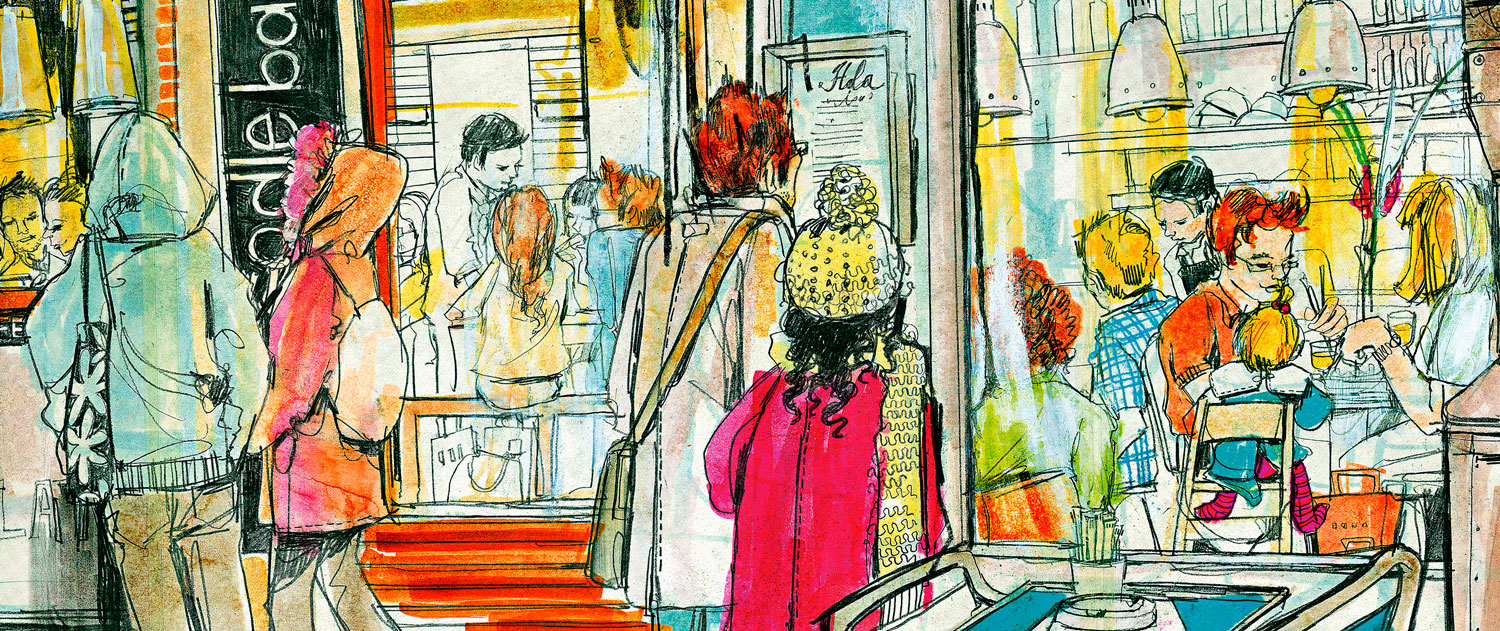
<p>Illustration by Jane Webster/Getty Images</p>
Earlier this month, Living Cities asked me to contribute to its 25th anniversary celebration, penning a blog post and joining a panel centered on the theme of “Race, Opportunity, and America’s Cities.” Living Cities works to revitalize communities through cross-sector collaboration and partnership, and its shift in approach since its 1991 founding is a case study in emerging trends taking place across the community development space. Below is a reprint of my blog post, one of a series that can be found here.
Living Cities’ evolution over the last 25 years reflects the community development field’s maturing understanding of what works for connecting people to opportunity and transforming systems so that residents and their neighborhoods can thrive. Best practice today requires understanding the dynamics of place, working across sectors, building integrated data systems, and facilitating research-practice partnerships to measure progress and continuously inform strategy. Most importantly, it requires us, to quote Bryan Stevenson, to “get comfortable being uncomfortable.” We must explicitly confront enduring racial barriers not only in the communities where we invest but also in our organizations and modes of work.
Understanding how place matters. A growing body of evidence is helping us better understand the mechanisms by which place can support or impede social and economic mobility. Looking simply at the income of neighborhood residents does little to tell you whether the place is a sinkhole that traps generations in poverty, or a springboard that offers opportunity within the neighborhood and connects people to mechanisms of mobility beyond its borders. As we utilize powerful new research to hone in on factors that seem to best determine the future of low-income children, the stale debate about whether to invest in people or places now seems silly. We need both. We are quickly building stronger evidence in determining the most important individual supports and community investments necessary to overcome trauma and poverty. We are guided by new information around how a network of social supports can sustain families who have moved to higher-opportunity neighborhoods, ensuring that they are able to thrive.
Still, with ever more knowledge of the impact of isolated poverty and trauma on children, we have to confront hard choices: do we have enough resources to transform all the places where children face overwhelming odds, or do we offer more choices in opportunity-rich communities? Resident voices are necessary to guide these hard choices.
Comparative advantage in cross-silo collaboration. A critical lesson of the last 25 years is that capital is key but insufficient as a stand-alone remedy. Affordable housing cannot be successful without transit access. Workforce training cannot be successful without accessible child care—the cautionary lessons of single interventions are well known. However, “one-stop shop” solutions are too often found playing roles where specialized actors might do better. Additionally, new organizations sent by funders to implement these solutions without community knowledge or legitimacy may only create frustration. Today, we know communities make progress when authentic leaders, national and local intermediaries, and community providers each bring their comparative advantage to the table and receive resources to support the difficult and time-consuming work of collaboration.
Data-driven practice. Shared data, common measures, and insights from integrated data can provide glue for collaboration. The costs of integrated data systems are falling and practices are improving. There was a time where researchers arrived in a neighborhood, collected data for a single study, disseminated results, and were frustrated that too few of their insights made their way into practice. Now, newer models have emerged for research-practice partnerships in which lasting relationships are forged, relevant questions are framed together, information systems are designed not simply for reporting but to provide ongoing insights for continuous improvement, information from other systems is merged, and trust is built between providers and researchers. Community development actors are joining these efforts, starting often with partnerships between housing providers and school or health systems. The future holds exciting solutions if funding for the required infrastructure can keep pace with the ever-increasing opportunities for building out knowledge systems.
Confronting our own racial blinders. Like many white Americans, the last two years have knocked me out of complacency about racial progress—complacency people of color within our society have never had the luxury to experience. In the community development field, being comfortable in our complacency has meant that neighborhood strategies to expand opportunity rarely considered explicitly the racial barriers that would limit their effect. What should a housing or infrastructure investment strategy for those places include to begin to tear down structures built up over decades? What role will community voices play in shaping the strategy? Will investors engage and support a diverse group of local leaders in planning and execution? What does the leadership look like in the community-based institutions empowered by these investments? An explicit strategy of removing racial barriers must be at the core of “a new urban practice.”
To start, that means looking hard at the makeup of our own institutions. Tackling structural racism in our work requires a broader understanding of relevant experience and competencies in our hiring. Research increasingly tells us that innovation emerges when different people combine their insights. Working with people with different experiences who bring different assumptions and frames of reference will make us less comfortable but ultimately is our only chance for success.
Let’s build a future where everyone, everywhere has the opportunity and power to thrive
Urban is more determined than ever to partner with changemakers to unlock opportunities that give people across the country a fair shot at reaching their fullest potential. Invest in Urban to power this type of work.